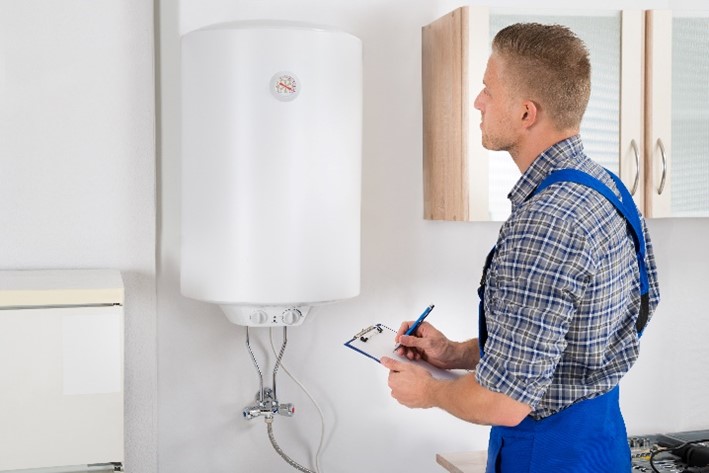Just how do you actually feel in regards to Tips on Maintaining a Water Heater?

Hot water is vital for daily comfort, whether it's for a refreshing shower or cleaning dishes. To guarantee your hot water system runs efficiently and lasts longer, normal upkeep is essential. This article offers functional tips and understandings on exactly how to keep your home's warm water system to stay clear of disruptions and expensive repair services.
Intro
Maintaining your home's warm water system might appear daunting, yet with a couple of easy actions, you can ensure it operates smoothly for several years to come. This overview covers every little thing from understanding your hot water system to do it yourself upkeep ideas and knowing when to call specialist assistance.
Importance of Maintaining Your Warm Water System
Routine upkeep not just prolongs the lifespan of your warm water system but likewise guarantees it operates effectively. Neglecting upkeep can result in lowered effectiveness, higher power costs, and even premature failing of the system.
Signs Your Hot Water System Demands Maintenance
Understanding when your hot water system requires interest can protect against significant issues. Watch out for signs such as irregular water temperature level, weird noises from the heating unit, or rusty water.
Recognizing Your Warm Water System
Before diving right into maintenance jobs, it's useful to recognize the standard elements of your warm water system. Typically, this includes the water heater itself, pipelines, anode rods, and temperature controls.
Monthly Maintenance Tasks
Regular month-to-month checks can help catch small concerns before they rise.
Flushing the Water Heater
Purging your hot water heater eliminates sediment build-up, enhancing performance and lengthening its life.
Checking and Changing Anode Rods
Anode rods avoid rust inside the tank. Evaluating and changing them when worn out is vital.
Evaluating and Adjusting Temperature Level Setups
Changing the temperature settings ensures ideal performance and security.
Do It Yourself Tips for Maintenance
You can carry out several maintenance jobs on your own to maintain your warm water system in top problem.
Looking for Leakages
Consistently evaluate pipelines and links for leakages, as these can bring about water damage and higher expenses.
Checking Pressure Relief Valves
Examining the stress safety valve ensures it functions correctly and prevents too much pressure buildup.
Protecting Pipelines
Protecting warm water pipelines minimizes heat loss and can conserve power.
When to Call an Expert
While DIY maintenance is advantageous, some concerns call for specialist experience.
Complicated Concerns Needing Professional Aid
Examples include major leakages, electrical problems, or if your hot water heater is constantly underperforming.
Routine Professional Upkeep Perks
Expert maintenance can include detailed evaluations, tune-ups, and ensuring conformity with security criteria.
Final thought
Normal maintenance of your home's warm water system is necessary for performance, long life, and expense savings. By complying with these suggestions and recognizing when to seek professional help, you can guarantee a trustworthy supply of warm water without unforeseen disruptions.
How to Maintain an Instant Hot Water Heater
Before tinkering with your hot water heater, make sure that it’s not powered on. You also have to turn off the main circuit breaker and shut off the main gas line to prevent accidents. Also turn off the water valves connected to your unit to prevent water from flowing into and out of the appliance. 2. When you’re done, you have to detach the purge valves’ caps. These look like the letter “T†and are situated on either side of the water valves. Doing so will release any pressure that has accumulated inside the valves while at the same time avoid hot water from shooting out and burning your skin. 3. When the purge valves’ caps are removed, you have to connect your hosing lines to the valves. Your unit should have come with three hoses but if it didn’t, you can purchase these things from any hardware or home repair shops. You can also get them from retail stores that sell water heating systems. Read the user’s manual and follow it to complete this task properly. When the hosing lines are connected, open the purge port’s valves. 4. You should never use harsh chemical cleaners or solutions when cleaning your unit. Make use of white vinegar instead. It should be undiluted and you’ll probably use about 2 gallons. 5. Now flush your water heater. This task should probably take about 40 minutes. We can’t give you specific directions for this because the procedure is carried out depending on the type, model and brand of your heater. With that being said, refer to the user’s manual. 6. When you’re done draining the unit, you have to turn off the purge port valves again. Remove the hosing lines that you earlier installed on each of the water valves. Put the valve caps (purge port) back in their respective places and be very careful so as not to damage the rubber discs that are found inside these caps. 7. Now that everything’s back in place, check your user’s manual again to find out how to reactivate your water heating system. 8. Once it is working, turn one of your hot water faucets on just to let air pass through the heater’s water supply pipes. Leave the tap on until water flows smoothly out of it. https://www.orrplumbing.com/blog/2014/september/how-to-maintain-an-instant-hot-water-heater/

I found that piece of writing about Water Heater Maintenance Tips You Can't Afford to Forget while doing a search on the search engines. Do you know another individual who is occupied with the topic? Please feel free to share it. Thanks a lot for your time invested reading it.
Call Today